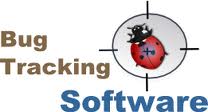What is Bug Tracking ?
Bug tracking is the process of
- discovering
- capturing
- reporting
- managing
data on bugs (Errors and Exceptions) that occur in software.
This process is used by Quality Assurance personals and Programmers to keep track of the errors and malfunctions of the Software product.
Nothing is perfect.. !! So is the Software...... But errors in software bugs needs to be far more considered. The bugs and errors in software products have damaged the reputation and have been responsible for massive revenue loss and time loss.
As the software grows in feature, its complexity too increases. Thus possibility for bugs too increases. At the same time, the time taken to discover and fix bugs too gets crucial. It will definitely be an effect to the product stability and to the whole business. Thus better Bug Tracking process would prevent all of this heartache.
What is a Bug Tracking System?
A Bug Tracking or Defect Tracking System is a Software Application that keeps track of the reported bugs in a Software Project.
Typically two types of bug tracking systems can be seen according to the type of project. They are
- bug tracking systems integrated internally with other software project management systems.
- bug tracking systems that allow end-users to enter bug reports directly. Normally they are used by open source projects.
In a good software development environment, bug tracking system is usually an essential software component. It is worthy to mention that Bug Tracking System provides a record of Software Team's Effectiveness.
There are two aspects in a bug tracking software. Each aspect has different levels of responsibilities and management priorities within the organization. Below explains each aspect in detail:
1) Task Management System
This is for the Large Scale Overview of the project. In other words, they concentrate on the pig picture analysis of the tasks or issues that needed to be completed for the project.
This includes: 1) Log Management Tools
2) Prioritization logic
The tasks carrying out are identifying which bugs should be fixed first and how long each stage would take. In this way it allows to measure the performance of the team.
This can be used by the Upper Level Management to get a higher level understanding of the project flow; whether the development team can meet the targeted deadlines and what are the bottlenecks. Also they are able to obtain a snapshot of where the project is at the current moment.
2) Bug Capturing Tool
This concentrate on the live errors. Provide the developers with environmental data about the errors.
This will collect error related details and categorize the errors, so that the programmers can work right on fixing the error.
After an error occurs, they collect all the important details like environment, OS, application variables, browser version etc.
- simple interface for communication about bugs
- automated notification system to keep the team on schedule.
Popular Bug Tracking Softwares
Bug Tracking Tools available in the market are innumerable. They have to be chosen as required by your project. There are variations in these tools.
For an instance JIRA supports Agile Planning and Reporting. Also it consists of drag and drop task prioritization. It is also possible to create custom dashboards in JIRA, that contain everything you need to plan your work. Wheras Bugzilla doesn't contain such features. But Bugzilla is open-source.
LeanTesting is web-based and requies no installation. Stryka has a wide area. It is not only a bug tracking tool, but also a Management Tool including requirement management, quality management. It can also be used for test case designing and test case management.
- Stryka
- Bugzilla
- LeanTesting
- JIRA
- Mantis
- Trac


